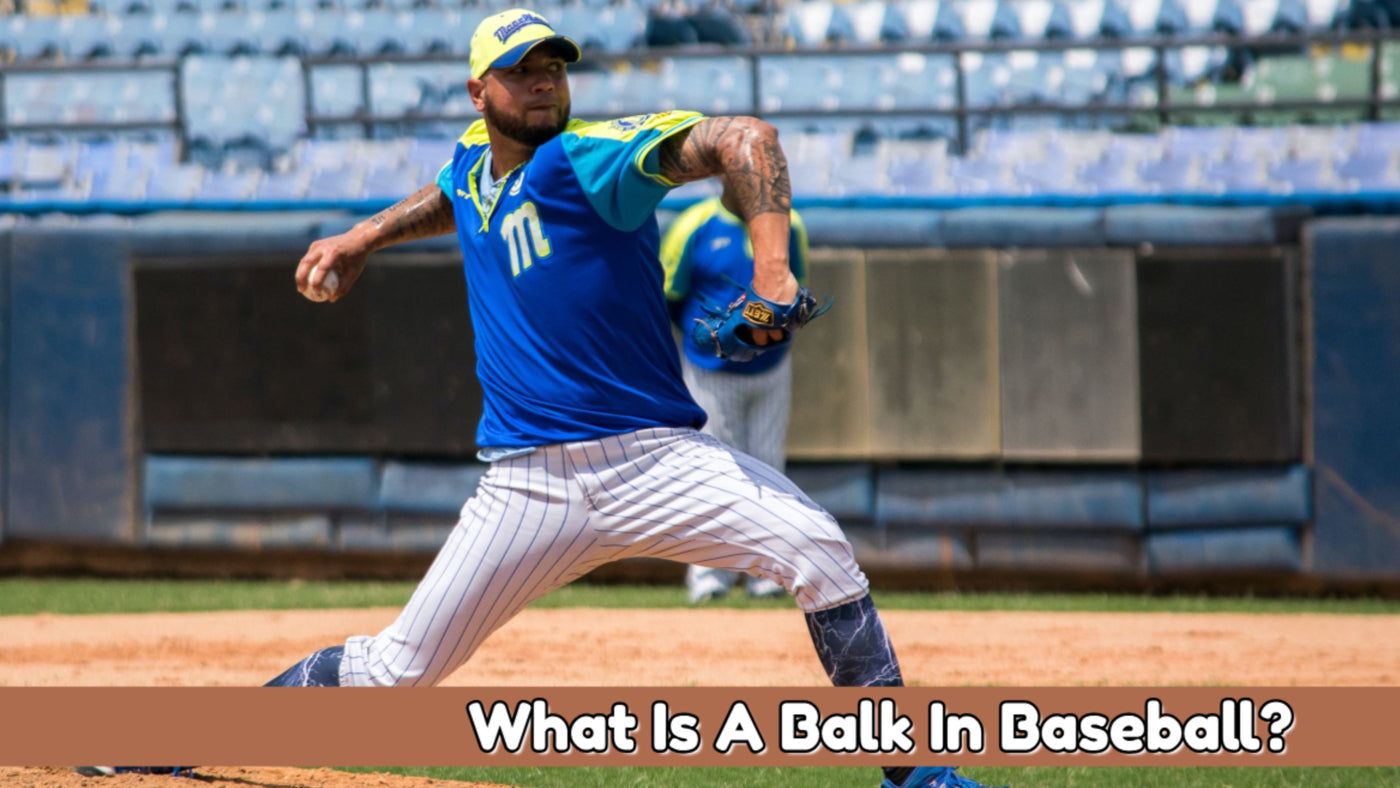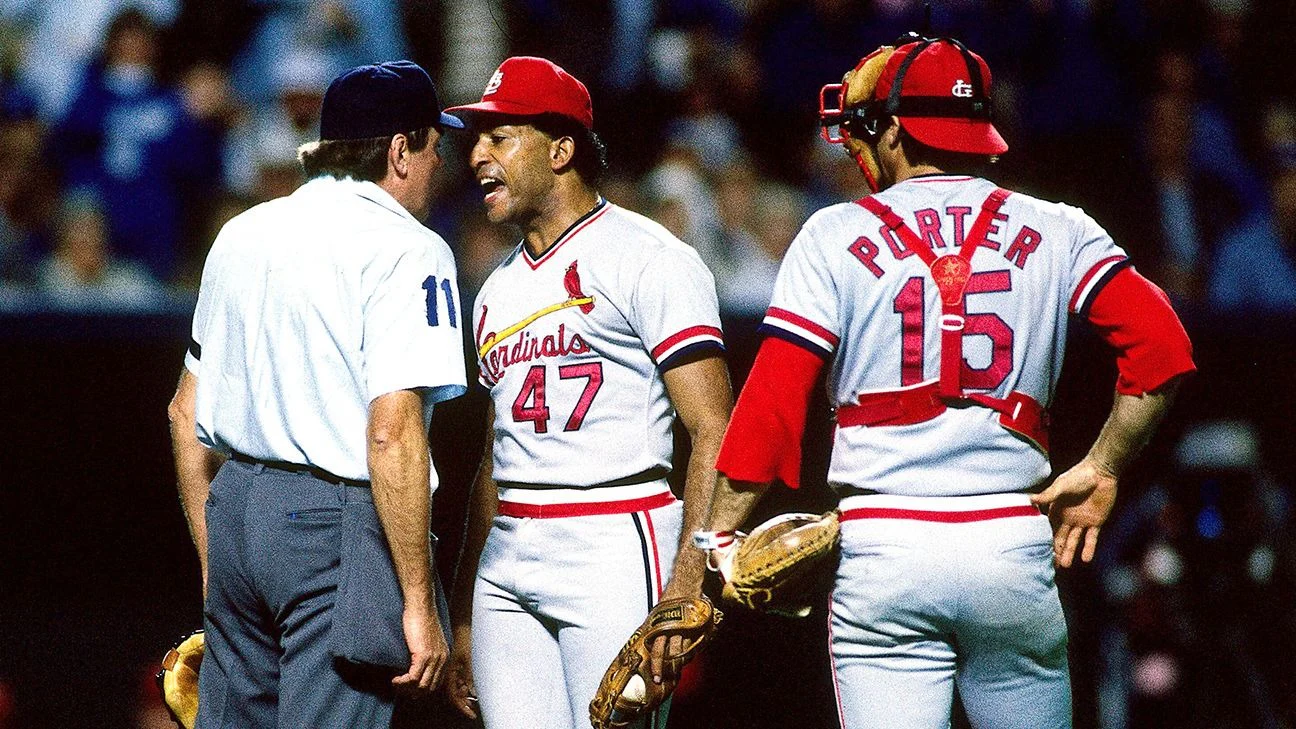Your Cart is Empty
- Ornament 🔥
- Gift for Family 🏠❤️
-
Pet
-
Memorial
-
Products
-
Home & Garden
-
Accessories
- Happy Customers ❤️
What is a Balk in Baseball? A Comprehensive Guide
July 03, 2023 13 min read

In the game of baseball, numerous rules govern the actions of players on the field. One such rule that holds significant importance is the balk. A balk in baseball can change the course of a game, affecting the progress of baserunners and potentially altering the outcome. In this comprehensive guide, we will delve into the intricacies of the balk, its various situations, consequences, and historical context, providing you with a deeper understanding of this fascinating aspect of the sport.
Contents
1. Understanding the Basics of a Balk in Baseball 2. Identifying Different Balk Situations 3. The Consequences of a Balk in Baseball 4. Evolution of Balk Rules and Interpretation 5. Common Misconceptions about Balks in Baseball 6. Famous Balk Incidents in Baseball History 7. Preventing Balks and Pitcher Techniques 7. Conclusion

"What is a balk in baseball"
1. Understanding the Basics of a Balk in Baseball
At its core, a balk occurs when the pitcher commits an illegal motion or action while on the pitcher's mound, with runners on base. The purpose of the balk rule is to ensure fair play and prevent pitchers from gaining an unfair advantage over baserunners. The origins of the balk can be traced back to the early days of baseball, where pitchers would often use deceptive tactics to confuse runners. Today, the balk rule remains an essential component of the game.
Understanding the basics of a balk is essential for anyone interested in the game of baseball. A balk occurs when a pitcher, while on the pitching rubber, makes a deceptive or illegal movement that misleads or confuses the baserunner. This results in an immediate advancement of any baserunners to the next base. Common reasons for a balk in baseball include not coming to a complete stop during the pitching motion or making a motion to throw to a base without actually delivering the ball. Umpires are responsible for recognizing and calling a balk, which can have significant implications on the outcome of a play or even the game itself. Having a solid grasp of the rules surrounding balks is crucial for players, coaches, and fans alike to fully comprehend the intricacies of America's pastime.
2. Identifying Different Balk Situations
A balk in baseball can manifest in various situations on the field, each with its own set of circumstances and consequences. Let's explore some common scenarios where a balk can be called:
- Deceptive Motion: Pitchers may be called for a balk if they employ deceptive motions or actions intended to confuse baserunners, such as fake throws or sudden movements.
- Illegal Disengagement: If a pitcher disengages from the pitching rubber without throwing or attempting to throw to a base while runners are on base, a balk can be called.
- Failure to Come to a Complete Stop: Before beginning their pitching motion, pitchers are required to come to a complete and discernible stop with their hands together. Failing to do so can result in a balk.
- Quick Pitching: When a pitcher throws the ball before the batter has had a reasonable opportunity to get set in the batter's box, it can be considered a quick pitch and result in a balk.
Failure to Step towards a Base: Pitchers must step directly toward a base when throwing or attempting to throw to that base with runners on base. Failing to do so can lead to a balk.
3. The Consequences of a Balk in Baseball
When a balk is called, its consequences can significantly impact the game. Each runner on base is awarded one base without the batter having to swing or any force play being made. This advancement can change the dynamics of the game, bringing runners closer to scoring positions or altering the strategy employed by baserunners. Understanding the consequences of a balk in baseball is crucial for both players and spectators alike.
The consequences of a balk in baseball can have a significant impact on the game. When a pitcher commits a balk, it results in an immediate advancement of all baserunners to the next base. This can completely change the dynamics of the game, as baserunners can move closer to scoring positions or even score a run without the need for a hit. A balk can also disrupt the timing and rhythm of the pitcher, potentially affecting their confidence and performance. Umpires are vigilant in calling balks, as they play a crucial role in ensuring fair play and maintaining the integrity of the game. The consequences of a balk serves as a reminder for pitchers to adhere to the rules and for teams to stay alert and take advantage of any opportunities presented to them.
4. Evolution of Balk Rules and Interpretation
The evolution of balk rules and interpretation in baseball reflects the ongoing efforts to refine and clarify the game's regulations. Over the years, the rules surrounding balks have undergone modifications and refinements to address various scenarios and prevent pitchers from gaining an unfair advantage. The interpretation of balks has also evolved, with umpires aiming to strike a balance between strict enforcement and allowing pitchers a reasonable degree of freedom. The changes have aimed to make the balk rule more consistent and easier to enforce, reducing ambiguity and promoting fair play. These ongoing adjustments demonstrate the commitment of baseball officials to adapt the rules to the changing dynamics of the game, ensuring that balks are correctly identified and called, thereby maintaining the integrity and fairness of America's beloved pastime.
Throughout the history of baseball, balk rules have undergone several changes and adjustments. Notable controversies have shaped the interpretation of balks, resulting in refinements to the rulebook. Umpires play a vital role in determining whether a balk has occurred, and their discretion can sometimes lead to differing interpretations. Exploring the evolution of balk rules provides insights into how this aspect of the game has evolved over time.
5. Common Misconceptions about Balks in Baseball
Balks can be a complex aspect of baseball, leading to numerous misconceptions among fans and even players. Addressing these misconceptions is essential to ensure a clear understanding of the balk rule. Some common misconceptions include confusing a balk with a wild pitch or incorrectly assuming that a pitcher can never fake a throw to a base. Clarifying these misconceptions helps dispel confusion and provides a more accurate understanding of the balk.
There are several common misconceptions about balks in baseball that can lead to confusion among players, coaches, and fans. One misconception is that any movement by a pitcher while on the rubber automatically results in a balk. In reality, the rules specify specific illegal movements or actions that must occur for a balk to be called. Another misconception is that a balk in baseball always results in a baserunner being awarded an additional base. While this is often the case, there are certain situations, such as when a batter-runner reaches first base safely on a hit, where a balk does not result in a baserunner's advancement. It is also important to note that a pitcher may exhibit deceptive movements as long as they are part of their normal pitching motion and not intended to deceive or confuse the baserunners. Understanding these misconceptions can help clarify the intricacies of balk calls and enhance the overall comprehension of the game.
6. Famous Balk Incidents in Baseball History

"St. Louis Cardinals: Joaquin Andujar”
Over the years, several memorable balk incidents have occurred in professional baseball. These incidents have not only influenced individual games but have also left lasting impressions on fans and players. By examining these incidents, we gain a deeper appreciation for the impact of balks on the sport and their role in creating dramatic moments.
There have been a few notable balk incidents in baseball history that have captured the attention of fans and left a lasting impact on the game. One such incident occurred during the 1985 World Series when St. Louis Cardinals pitcher Joaquin Andujar was called for a balk in Game 7 against the Kansas City Royals. Andujar's balk came with a runner on third base and resulted in a run being scored, ultimately affecting the outcome of the game and the series. Another memorable balk incident involved pitcher Steve Carlton of the Philadelphia Phillies in 1983. With runners on second and third, Carlton faked a throw to third base, causing the runner at third to break for home. However, the umpire called a balk, nullifying the play and preventing a potential run from scoring. These incidents demonstrate how balk calls can have significant consequences in high-stakes games, emphasizing the importance of understanding and adhering to the balk rules.
7. Preventing Balks and Pitcher Techniques
Preventing balks is crucial for pitchers to maintain control and avoid giving the opposing team any advantage. Pitchers employ various techniques to minimize the risk of committing a balk. One fundamental aspect is ensuring a proper starting position on the pitching rubber, and establishing a stable and balanced stance. Clear communication with the umpire is essential to understand their interpretation of the balk rules and to address any concerns. Maintaining a consistent delivery motion with smooth and deliberate movements helps avoid deceptive actions that can lead to a balk. Pitchers also need to be mindful of their pickoff moves, ensuring they execute them correctly and within the rules to avoid any violations. By practicing these techniques and having a solid understanding of the balk rules, pitchers can minimize the likelihood of committing a balk and remain in control of the mound.
To avoid committing a balk, pitchers must be aware of proper techniques and mechanics. Understanding the rules and employing specific strategies can help pitchers minimize the risk of balks. Coaches and trainers play a crucial role in instructing pitchers on the correct techniques and providing guidance to prevent balks. Exploring effective prevention methods ensures a smoother and fairer game.
7. Conclusion
The balk in baseball is a rule that holds significant importance, capable of influencing the outcome of a game. By understanding the basics, different situations, consequences, and historical context surrounding the balk, players and fans alike can deepen their appreciation for this aspect of the sport. Additionally, debunking common misconceptions and exploring famous incidents further enhances our comprehension. The balk remains an intriguing element of baseball, weaving drama and strategy into the fabric of the game.
⏩ FAQs: Answers to Top Questions about Balk in Baseball:
1. What is a balk in baseball?
A balk in baseball refers to an illegal act committed by a pitcher while they are on the mound. It occurs when the pitcher makes a deceptive or illegal motion that violates the rules and confuses the baserunners. When a balk is called, any runners on base are awarded one base.
2. How many ways can a pitcher balk?
There are various ways a pitcher can commit a balk, and the specific actions that constitute a balk are outlined in the official rules of baseball. The rules provide guidelines and examples of actions that can be considered balks, such as making deceptive movements, failing to come to a complete stop, or not delivering the pitch properly.
3. Can a pitcher balk with nobody on base?
No, a pitcher cannot commit a balk if there are no baserunners on the field. The rules state that a balk can only occur when there are runners on base.
4. Is it a balk to be on the rubber without the ball?
Yes, it is considered a balk if a pitcher is on the rubber without the ball and engages in actions that are intended to deceive the baserunners. The pitcher must have possession of the ball while standing on the rubber to avoid a balk.
5. What are examples of a balk?
Examples of balks can include actions such as faking a throw to a base without stepping off the rubber, failing to come to a complete stop during the pitching motion, or making an illegal movement that confuses the baserunners. These are just a few instances, and the official rules provide more specific examples.
6. Can a batter hit a pitch called a balk?
Yes, if a pitch is called a balk, the batter can still swing and attempt to hit the pitch. The outcome of the play will depend on the result of the swing and any subsequent actions by the baserunners.
7. Can a batter make a pitcher balk?
No, a batter cannot directly cause a pitcher to commit a balk. Balks are solely the responsibility of the pitcher, and the actions of the batter do not directly result in a balk being called.
8. Has an MLB game ever ended on a balk?
Yes, there have been instances in Major League Baseball where a game has ended on a balk. A balk can lead to a run being scored or runners advancing, which can potentially affect the outcome of a game.
9. Can a first baseman be called for a balk?
No, a first baseman cannot be called for a balk. Balks can only be committed by the pitcher while they are on the mound.
10. Can a catcher balk?
No, a catcher cannot commit a balk. Balks are specific to the pitcher's actions on the mound.
11. Is it a balk if you drop the ball on the mound?
Dropping the ball on the mound alone does not constitute a balk. A balk is typically related to deceptive or illegal movements made by the pitcher, rather than simply dropping the ball.
12. Why do teams intentionally balk?
Teams may intentionally balk to execute specific strategies in certain game situations. For example, intentionally balking can be used to create a force play, set up a potential pick-off attempt, or disrupt the timing and rhythm of the opposing team's baserunners.
13. Is it a balk if the pitcher throws to a fielder not at a base?
No, it is not a balk if the pitcher throws to a fielder who is not stationed at a base. A balk is primarily concerned with the pitcher's actions on the mound and their relationship to the baserunners.
14. What is a walk-off balk?
A walk-off balk refers to a situation where a balk is called, and the resulting action allows the winning run to score, ending the game. It occurs when the defensive team commits a balk with a baserunner on a base, resulting in the game-ending run being awarded.
15. What is a balk for dummies?
In simple terms, a balk occurs when a pitcher makes a deceptive or illegal motion that confuses the baserunners. It often leads to the runners being awarded an additional base.
16. How many balk rules are there?
There are specific rules outlined in the official baseball rulebook that govern balks. These rules provide guidelines and examples of actions that can be considered balks, but the exact number of specific balk rules can vary.
17. What is a balk made of?
In baseball, the term "balk" refers to an action or violation committed by the pitcher. It is not an object or substance that physically exists.
18. Can you hit a home run on a balk?
No, a batter cannot hit a home run directly on a balk. A balk results in baserunners being awarded an additional base, butit does not directly impact the batter's ability to hit a home run. However, the baserunners may advance and potentially score on a subsequent play, including a home run hit by a teammate.
19. How does an umpire call a balk?
When an umpire observes a balk, they will make a verbal call by announcing "Balk!" or using a hand signal, typically pointing their arm towards the base or bases affected by the balk. The specific hand signals may vary slightly among umpires, but the call will indicate that a balk has been committed.
20. What are the 13 ways to balk?
The concept of "13 ways to balk" is a reference to an old baseball book called "The Hidden Language of Baseball" by Paul Dickson. In reality, the official rules of baseball outline the specific actions and circumstances that can constitute a balk, and they do not necessarily conform to a set number like 13.
21. How does a catcher get called for a balk?
A catcher cannot be called for a balk as balks are specific to the actions of the pitcher. The catcher's role is primarily to receive pitches and make defensive plays.
22. Can a balk call be overturned?
Balk calls, like most umpire decisions, cannot be directly overturned by replay review. Umpires have the final authority to make judgments on balks during the game. However, the decision to call a balk can be discussed and clarified with the umpiring crew chief if there are any questions or concerns
23. Does a balk count as a steal?
No, a balk does not count as a steal. A balk occurs before the pitch or during the pitcher's delivery, while a stolen base refers to a baserunner successfully advancing to the next base while the pitch is being thrown.
24. Can you balk with nobody on?
No, a pitcher cannot commit a balk if there are no baserunners on the field. Balks can only occur when there are runners on base.
25. Can a pitcher balk with no runners on?
No, a pitcher cannot commit a balk if there are no baserunners on the field. Balks can only occur when there are runners on base.
26. How many ways can a pitcher balk?
There are various ways a pitcher can commit a balk, and the specific actions that constitute a balk are outlined in the official rules of baseball. The rules provide guidelines and examples of actions that can be considered balks, such as making deceptive movements, failing to come to a complete stop, or not delivering the pitch properly.
27. What are examples of a balk?
Examples of balks can include actions such as faking a throw to a base without stepping off the rubber, failing to come to a complete stop during the pitching motion, or making an illegal movement that confuses the baserunners. These are just a few instances, and the official rules provide more specific examples.
28. Is it a balk to be on the rubber without the ball?
Yes, it is considered a balk if a pitcher is on the rubber without the ball and engages in actions that are intended to deceive the baserunners. The pitcher must have possession of the ball while standing on the rubber to avoid a balk.
29. Is it a balk if you don't throw to first?
Not throwing to first base alone does not constitute a balk. The rules specify certain circumstances and actions that must occur for a balk to be called, and simply not throwing to first base is not one of them.
30. What is the difference between balk and baulk?
"Balk" and "baulk" are alternative spellings of the same term, referring to the same concept in baseball. The spelling "balk" is more commonly used in American English, while "baulk" is more common in British English.
31. Is it a balk to fake a throw to third base?
Faking a throw to third base without stepping off the rubber can be considered a balk. The rules state that a pitcher must disengage from the rubber before attempting a throw to a base, or it may be deemed deceptive and result in a balk.
32. Why is it called a balk?
The origin of the term "balk" is uncertain, but it has been used in baseball since the 19th century. The term likely evolved from earlier meanings of "balk" related to obstacles or hindrances. It came to be applied to the pitcher's illegal actions that hinder the baserunners, giving rise to the term "balk" in baseball.
Thank you for reading the entire blog post on “What is a Balk in Baseball? A Comprehensive Guide”. If you have any feedback or questions, please feel free to reach out to us at: support@suzitee.com. We appreciate your time and interest!
Related products for Baseball Lovers:

Hazel Edison
Hazel Edison's mission as a content marketer and social media manager is to help businesses connect with their target audience through engaging and informative content. With a deep understanding of the power of digital media, Hazel is committed to helping the brand build its online presence and drive results.
Related articles in Baseball

What Is a Quality Start in Baseball? Understanding the Pitching Metric
August 27, 2023 7 min read
Read More
 Track Order
Track Order
